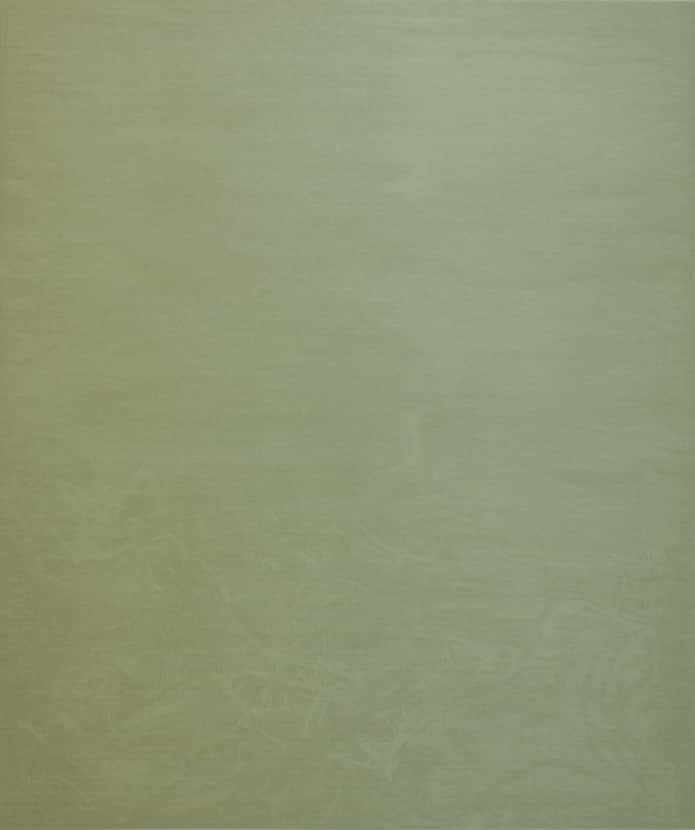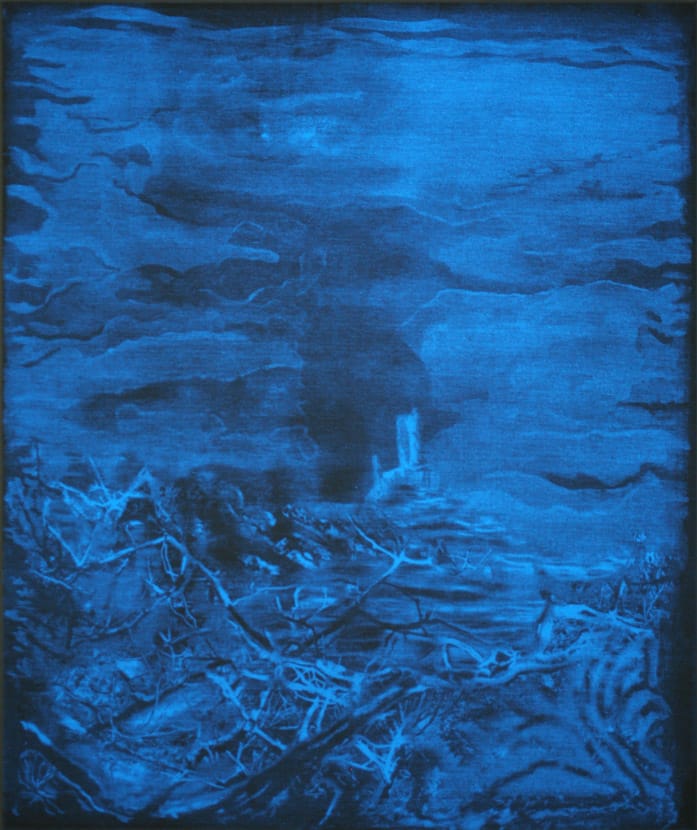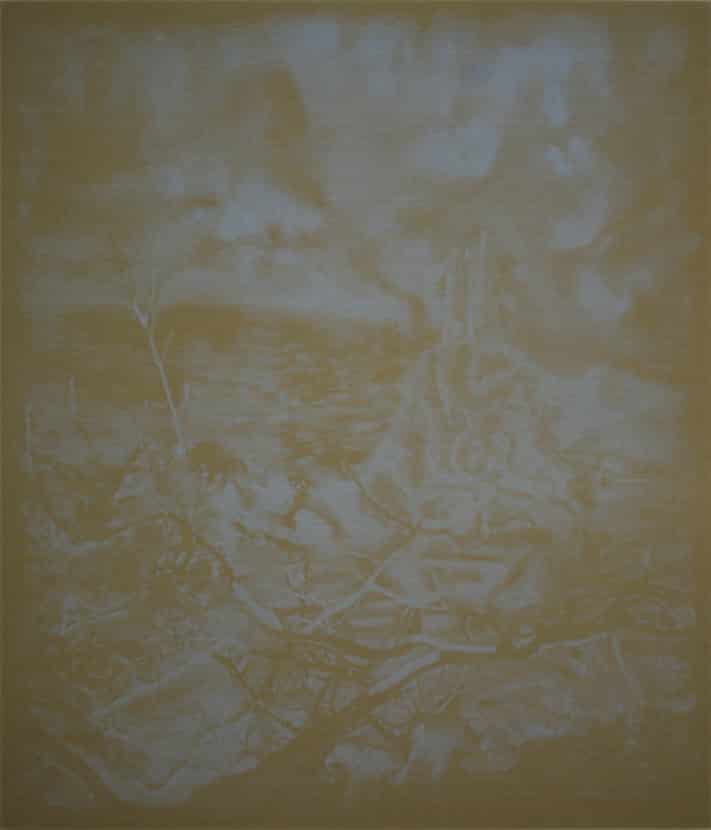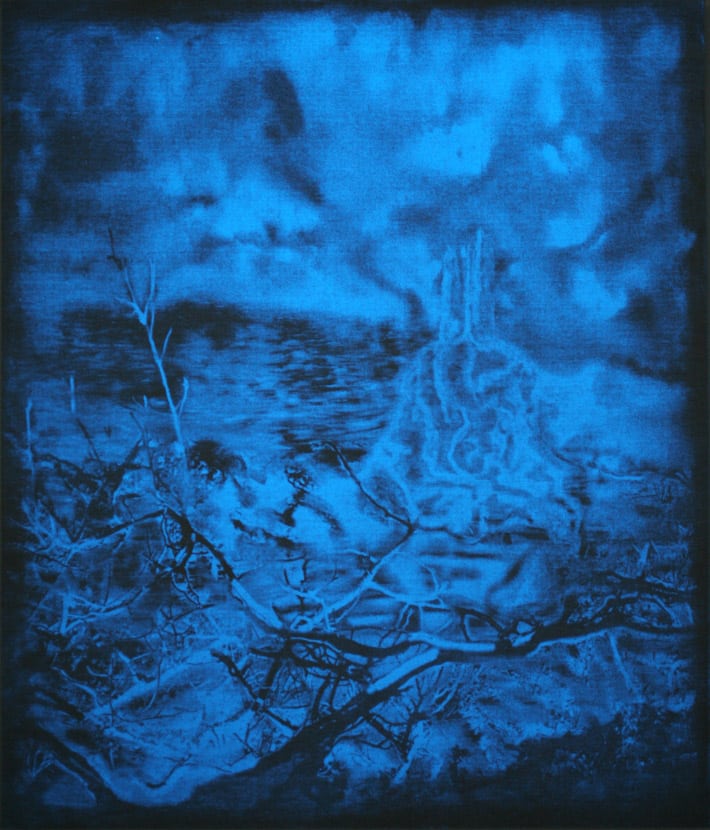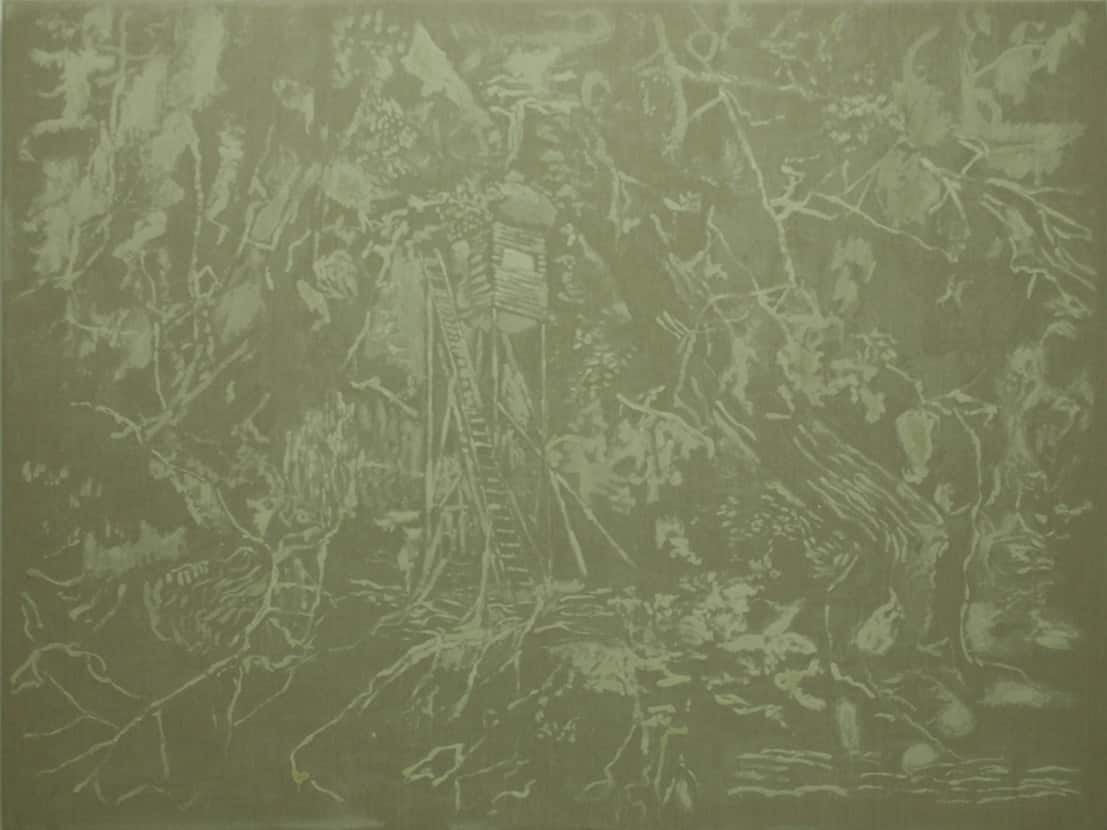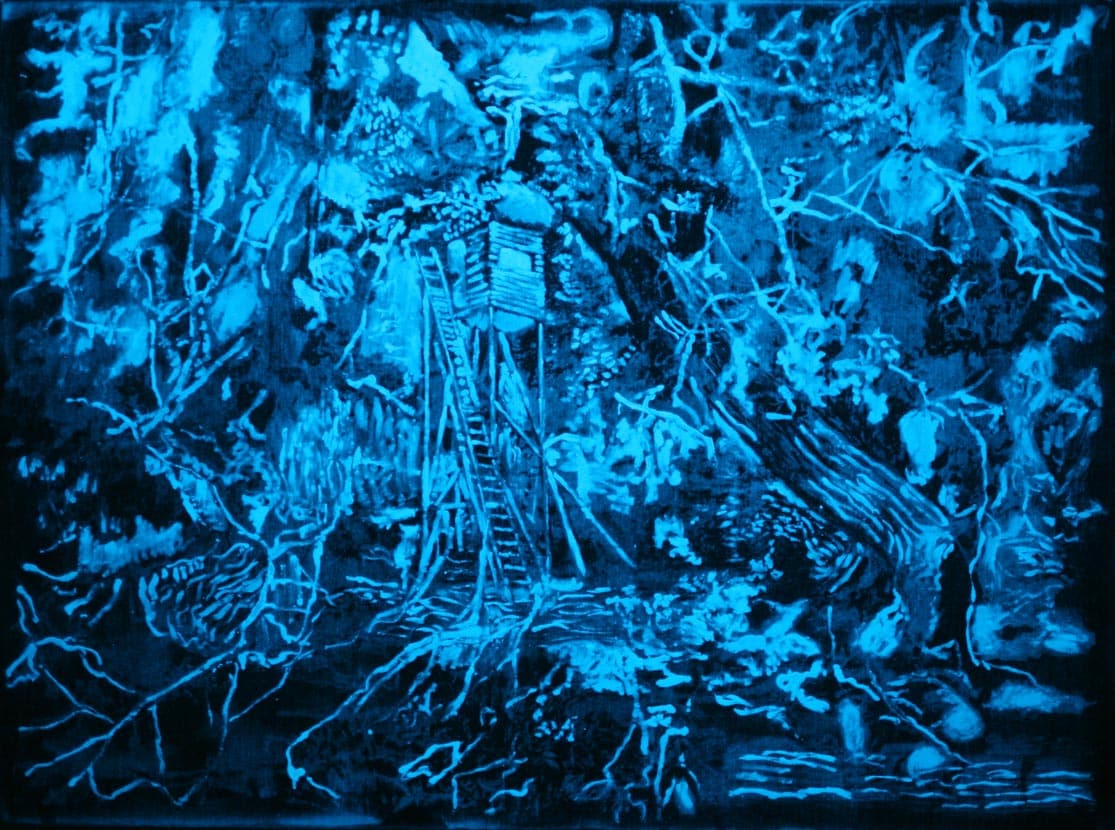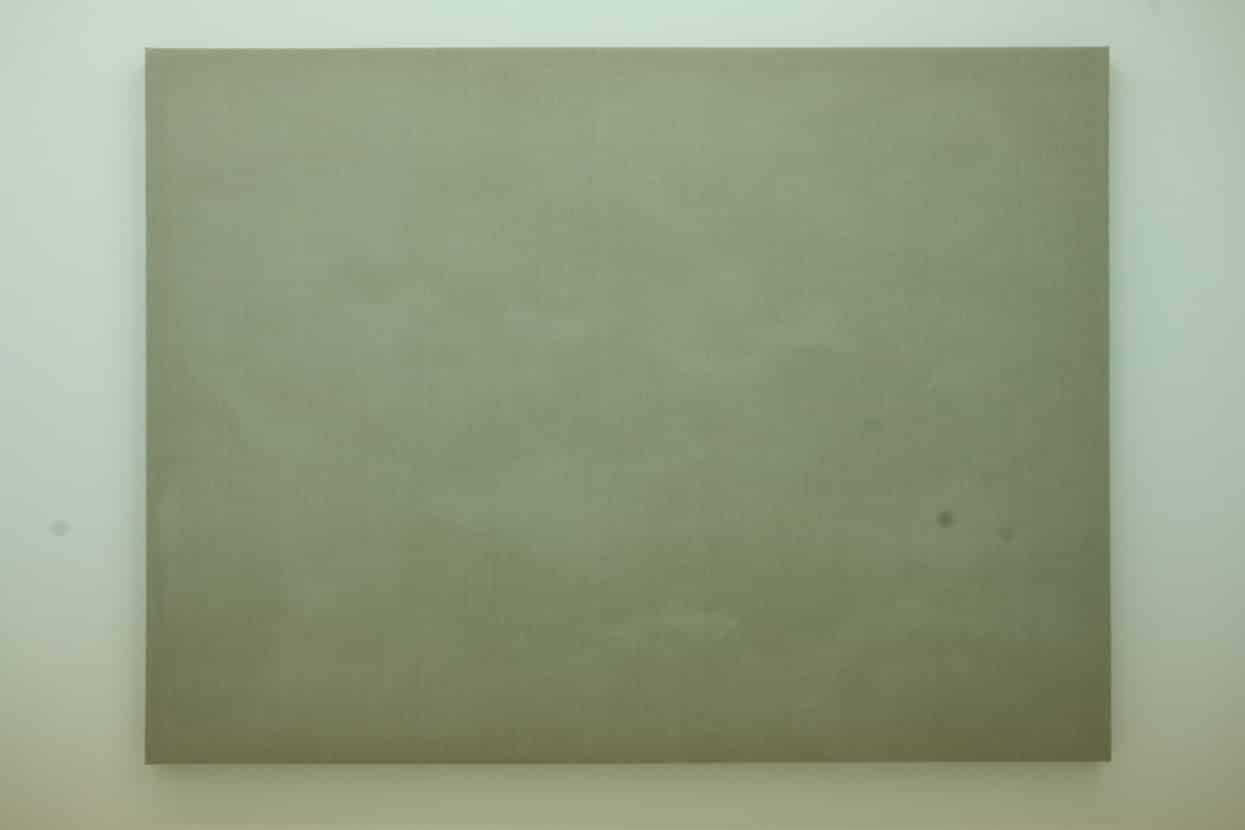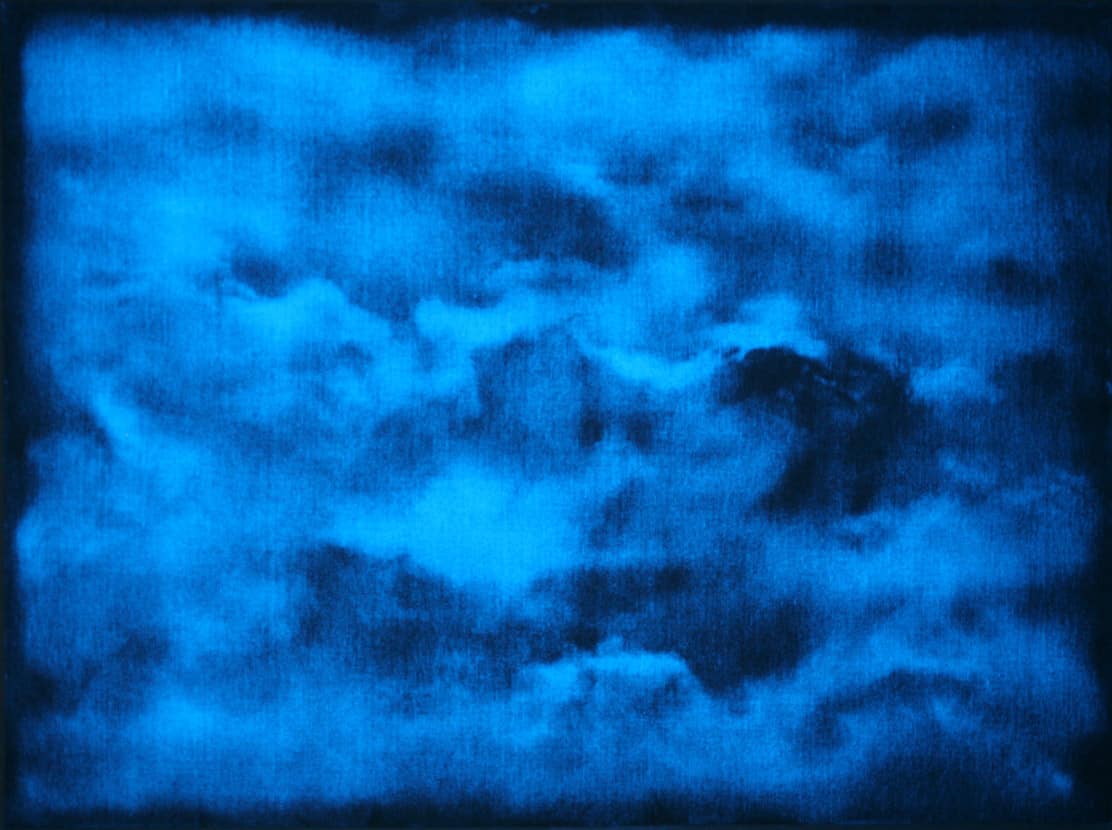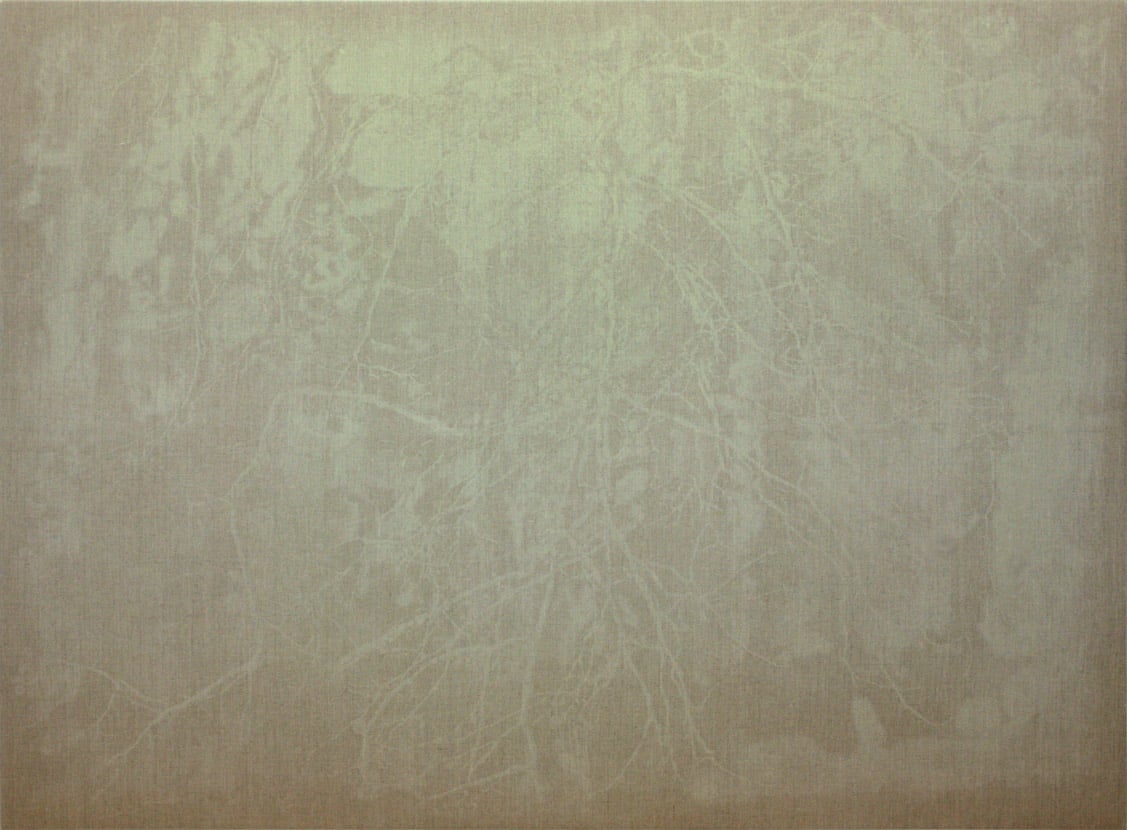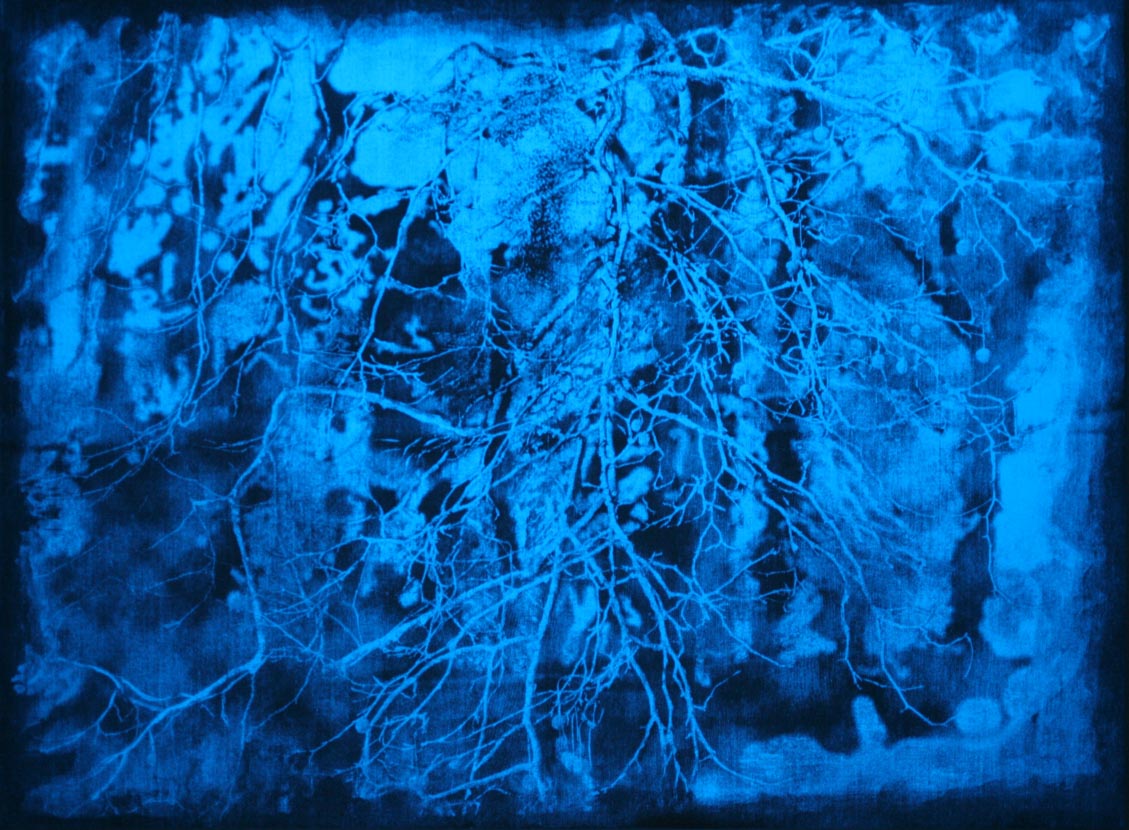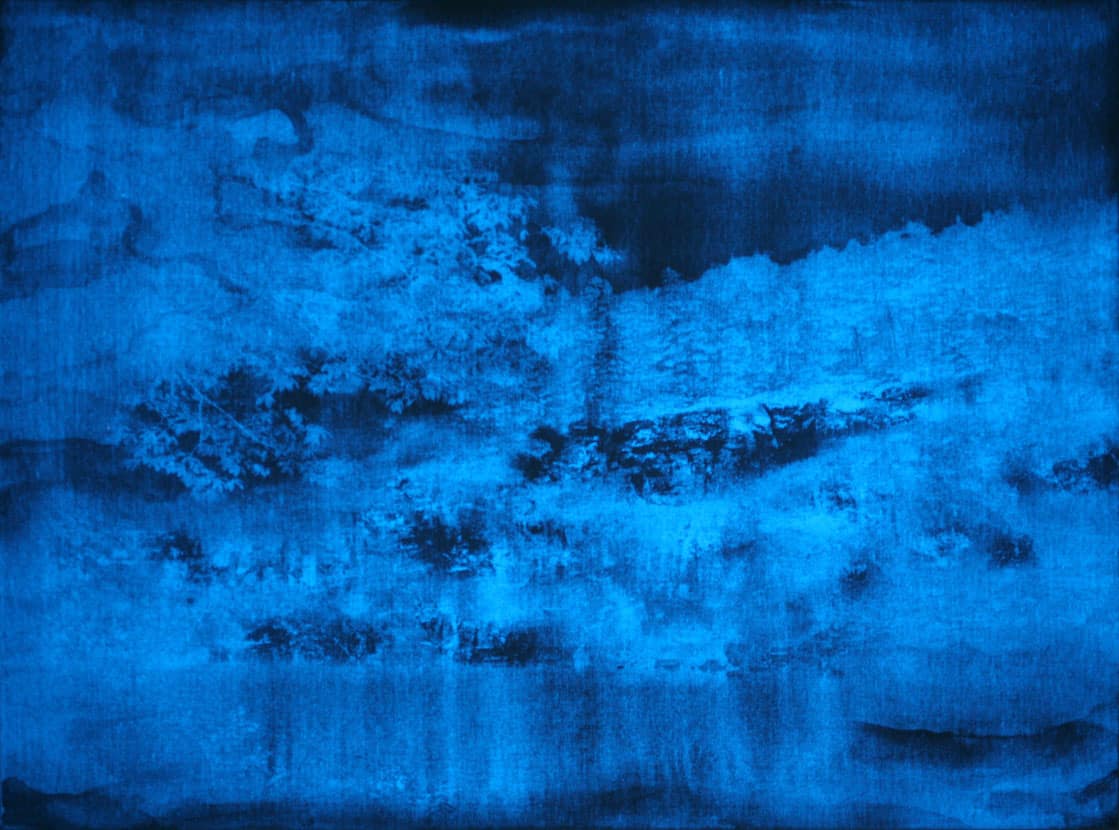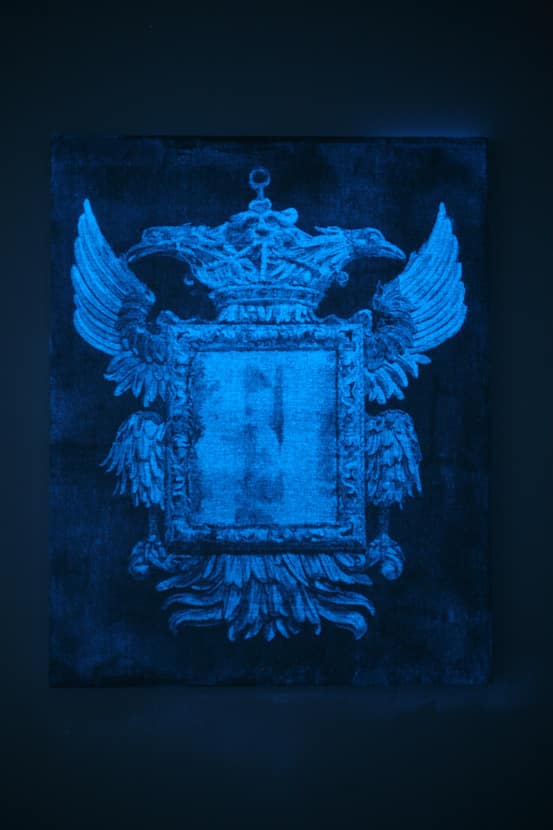Hansen’s imagery is carefully chosen to enhance the tainted. In one work, a Hochsitz (a raised, covered structure used for observing or hunting animals) stranding in a crowded forest as dense as an Albrecht Duerer woodcut or a Gustav Mahler musical composition ominously connotes a military lookout post. In another image, a double eagle that ornately decorates a mirror offers a reflection on historical German symbolism as well as the country’s immediate postwar past. Pictures of turbulent cloudscapes and distant castles on rocky hills above craggy branches and barren landscapes draw attention to sublime experiences and their historical baggage. The image in the exhibition were prepared digitally, as montages worked in Photoshop, and drawn on paper with gouache, before they are screenprinted onto unprimed canvases with semi-transparent ink. Hansen then blows a luminescent powdered pigment across the surface of the wet ink, resulting in a mute beige-yellow surface. Barely perceptible in the light, the images become recognizable as the gallery darkens, the works also brings the space into the service of his work. Importantly, in conjunction with the artist’s overall body of work, this tactic interrogates notions of positive and negative, where and history to create an art that, while culturally specific in certain ways, is universal and meaningful to a wide audience.
